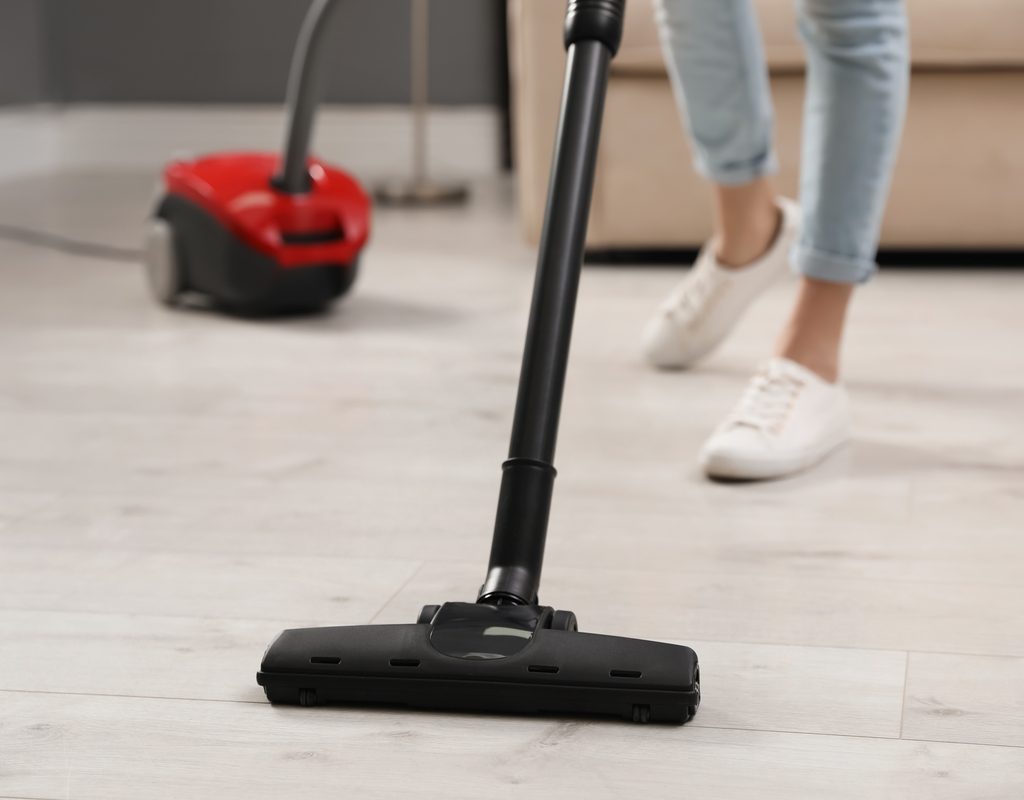Cleaning your home is essential, not only to keep it an enjoyable place to live, but also to keep it safe for you and your family. But finding the time and energy to clean can be tough, especially when you have a busy schedule and are balancing multiple commitments of work and family. Regularly cleaning your home can help keep the job manageable, but it’s important to find the proper cleaning routine, or else you’ll waste all your time. From how you clean to how often you clean, planning out the process and figuring out what works for you makes it easier to keep your home looking great.
Start with a list
Before you make yourself a cleaning routine, you’ll need to create a list of what needs to be done, and how often it needs doing. Take a walk through your house and think about your current cleaning routine. Jot down everything you can think of — such as wiping your kitchen counters, mopping the entryway floor, cleaning the hall mirror — and then organize that task list by room.
Next, figure out how often each task should be done. Remember, doing some of these chores more regularly can make them more manageable—for instance, if you scrub your bathroom tile thoroughly each week, you’ll be dealing with less buildup and grime each time, so the chore is easier. Write down your ideal frequencies for each task.

Develop a schedule
Your next step will be to incorporate these jobs into a cleaning schedule. It’s helpful to work with a monthly schedule, which allows you to incorporate those once-in-a-while tasks, like cleaning your oven or washing the windows, into your routine. A four-week schedule ensures those tasks don’t get overlooked while also allowing you to focus on the smaller, more repetitive tasks that arise daily or weekly.
As you start to assign these cleaning tasks to your schedule, think about what will make your efforts successful. Maybe you have more time to clean on certain days of the week, or maybe you want to retain a day or two entirely for yourself with no chores. Think about factors like the time of day when you’re most motivated to do chores and days that aren’t ideal to schedule big tasks, like the day after you’ve just worked a double shift.
Plan for the unexpected
Make a plan for what will happen if you’re unable to do certain chores on their assigned days, like if you have a change in your work schedule or get sick. Whether you decide to shift the chores to another day or divide them up among many other days, having a plan in place to handle these situations can ensure that you don’t fall too behind on your work.
Create a daily cleaning routine
While a four-week cleaning schedule can help to keep you organized and on task, incorporating cleaning into your daily routine can make it easier to keep up with all of your housework. Taking care of some smaller, routine cleaning tasks can keep the work from piling up, so the extra cleaning that’s part of your four-week schedule is less overwhelming, and you have more energy to accomplish it.
Consider making these tasks part of your daily cleaning:
- Washing dishes daily or after every meal
- Sweeping the floors that see the most traffic
- Wiping down your kitchen counters and table, and your bathroom counters
Look for other ways you can take care of small, quick cleaning projects throughout the week. When you have spare time, do tasks like wiping down your kitchen appliances, throwing out old food to keep your fridge and cupboards clean, and doing loads of laundry.

Get the family involved
Cleaning an entire home is a big job for one person, especially when multiple people live in the home. Getting the whole family involved in cleaning can help to reduce that burden.
Once you have your cleaning schedule established, assign each family member some appropriate cleaning chores, and give them a weekly deadline to complete those chores. If you have kids in your house, identify age-appropriate duties.
Making a big cleaning chart can help keep the whole family aware of and responsible for their tasks. A checklist will allow you to monitor every family member’s progress and ensure that the cleaning gets done. Having extra hands helping out is particularly important when working on seasonal cleaning and maintenance chores, like leaf removal and mowing the lawn.
Creating a cleaning routine and then sticking to it is challenging. While there are plenty of pre-made cleaning routines and schedules you can pull from, designing a routine that works with your needs and habits will help you be successful. Think about your current cleaning habits, schedule, and what you need to accomplish to design a routine that’s right for you and what you can keep up with. The more you can personalize your routine and find ways to get and keep yourself motivated, the better the chances you’ll stick with the routine and feel good about your new cleaning habits.


